Jessie LaChance, Levi Aysanabee, Hope Sanderson and Allan Porter. Outside Looking In, a new certificate program for Indigenous youth bridges educational gaps.Supplied
When Levi Aysanabee started a dance collective in his Garden Hill First Nation community in northern Manitoba last summer, he never expected he would soon be getting business ideas for it from some of the world’s biggest companies.
But earlier this month, Mr. Aysanabee, along with other participants in the Future Leaders Next Level certificate course, spent a week in Toronto speaking with staff at Microsoft, IBM, Sun Life, Amazon Web Services and Toronto Metropolitan University.
Mr. Aysanabee has been enrolled in the new program since January. Created by the national charity Outside Looking In, it aims to provide career-planning resources, mentorship and networking opportunities for young Indigenous people living in remote communities.
“I want to learn more about entrepreneurship, and they’ve talked about a lot of things that relate to” Byrds, his fledgling dance collective, Mr. Aysanabee said.
Lessons about branding, for example, were easy to apply to the side hustle, added the 22-year-old, who works as an educational assistant at a high school.
The main focus of Outside Looking In, founded in 2007, is using dance classes to motivate students to stay in high school. But the program’s continued success – a 96-per-cent graduation rate, according to chief executive officer Hope Sanderson – led to an obvious question: What could the organization do for students after they graduated?
Future Leaders Next Level, Ms. Sanderson says, provides a way for Indigenous young people to explore careers they may not otherwise have exposure to.
“They’re also starting to build their own professional acumen,” she said. “What does it mean to be a professional, and do I want to work in the corporate environment? And if I do, what’s out there for me?”
Over the course of the 13-week program, a wide range of guest speakers help to answer those questions in virtual meetings by discussing their careers and giving advice. Participants – 45 in 2025, up from 21 who participated in a modified version last year – also get paired with mentors, many of whom work with Sun Life, which sponsors the program.
Presentation topics have included environmental science, food insecurity, working in the skilled trades, being a paramedic, internet security and entrepreneurship. Two Indigenous members of the Royal Canadian Mounted Police have spoken to the class, and an Indigenous woman has talked about her job in Alberta’s Ministry of Justice and having a public service career.
“We’re trying to make our youth see there are Indigenous people in these organizations,” Ms. Sanderson said.
The highlight of the program is the weeklong trip to Toronto.
During their visit, students talked about robotics with staff at Amazon Web Services and cloud computing at IBM. Sun Life helped students create LinkedIn profiles and provided job interview coaching.
“It’s about how to make your résumé stand out, what to do and what not to do from an interview perspective,” said Allan Porter, senior vice-president and chief technology officer at Sun Life.
But he believes the visits with technology companies are the most important part.
“There’s so many opportunities in technology, and it’s about creating that awareness and then … enabling students to come in and talk to different technologists in different professions,” he said.
Jessie LaChance, from the Ahtahkakoop Cree Nation in Saskatchewan, was eager to spend the week in Toronto for two reasons.
One is that it’s a huge step toward the 30-year-old’s goal of becoming a computer programmer.
The other is less career-oriented but just as important, she said. “I want to inspire others in my community.”












![2nd Apr: Ranveer vs. Wild with Bear Grylls (2022), 1hr 12m [TV-MA] (6.35/10)](https://occ-0-8162-92.1.nflxso.net/dnm/api/v6/Qs00mKCpRvrkl3HZAN5KwEL1kpE/AAAABSvRTrHYZCaWdB_FQofz2nyIRWnZF9lpgb5NtjviYqDJzUrdAr6BXVmFaeBwv0rftuuTfNqnVo2RgSzX8aKDSJFePH83PiVBpVZwA9gCbaDWAQUTBDyaUrVW_UTu7B6WOMW-aQ.jpg?r=f19)



